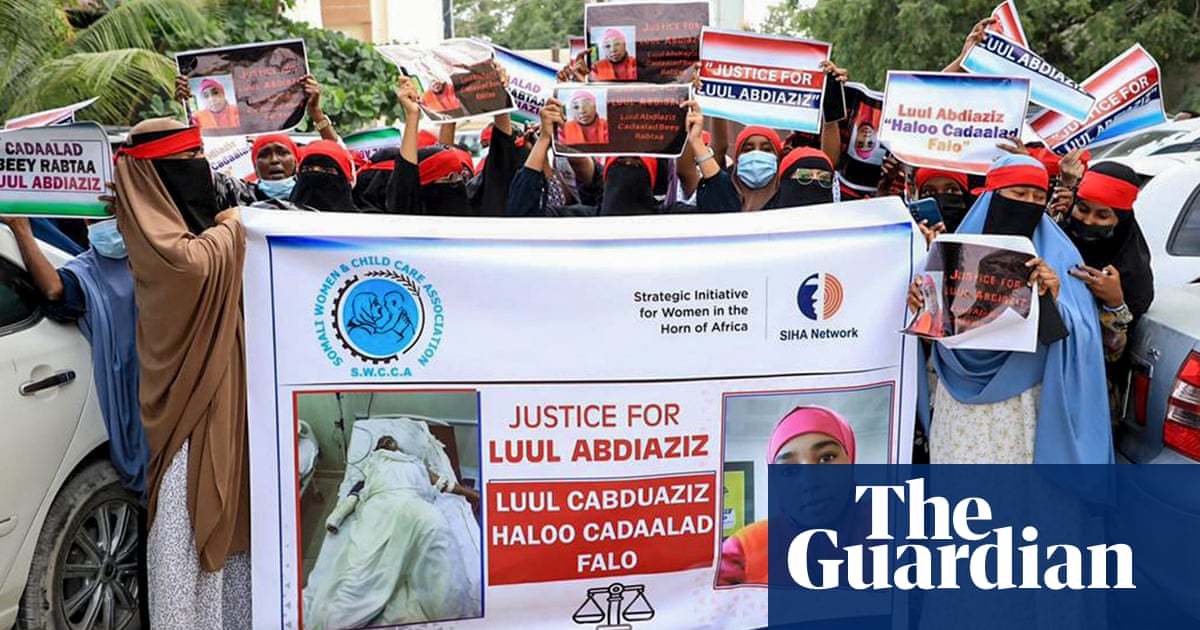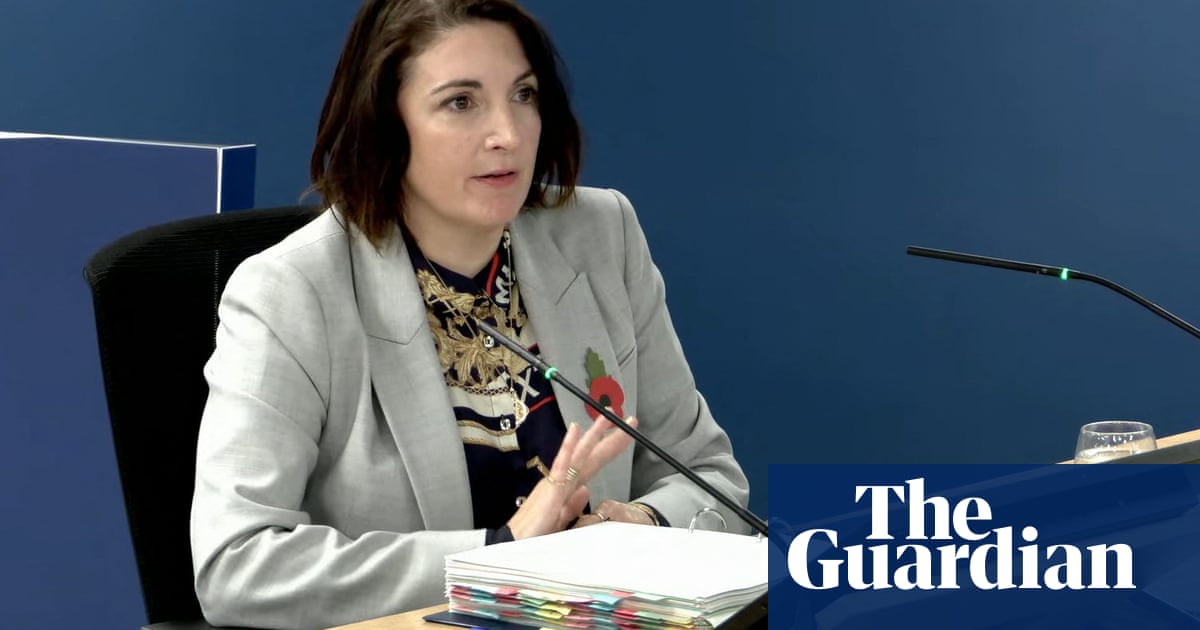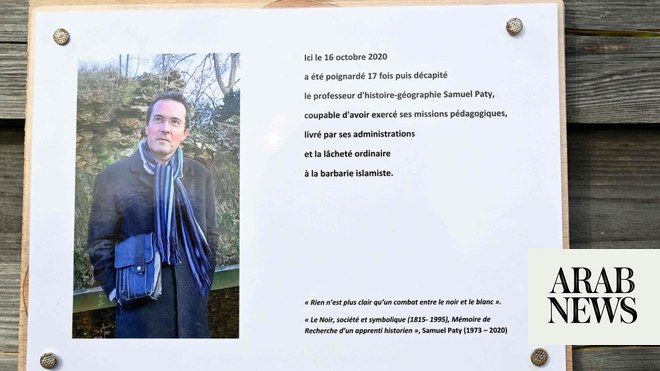
On 22 January 2022, 11 boys entered a CCTV blind spot at the intersection of two roads in Stretford, Manchester. Only 10 left alive. Sixteen-year-old Kennie Carter was stabbed, his last words heard by his older brother to whom he was on the phone at the time: “They’ve stabbed me in my heart, bro.”
Kennie’s mother, Joan Dixon, later described how her family had been shattered by his death.
What happened in that CCTV blind spot has been the focus of a six-week trial at Manchester crown court, at which 10 Black boys, ranging in age from 12 to 16 at the time of the killing, stood accused of murder.
Described as “a jigsaw with pieces missing” and “a net that had been cast wide” by lawyers defending the boys, the trial was the latest of several high-profile joint enterprise prosecutions involving large groups of Black youths in Manchester.
The controversial legal doctrine allows prosecutors to charge multiple people with the same crime. It can be applied even if a defendant played no active role but is found to have encouraged or assisted the main perpetrator. What it means to assist or encourage can fall to the the jury to interpret.
New data obtained by the Guardian shows that the number of people being charged and convicted as secondary parties in murder has significantly increased in the past 10 years, despite clear warnings that the doctrine had “taken a wrong turn”.
The contention surrounding the legal doctrine was not lost on the judge. Before the jury was even sworn in, Judge Julian Goose was heard warning the lawyers present about the term. “I’m not a fan any more of the words ‘joint enterprise’; it raises concern amongst people interested in these matters,” he said.
But while the phrase was avoided, the principle behind the doctrine was clear. Despite the lack of CCTV at the moment of the stabbing, there was no question over who had caused the death. Everyone involved in the trial, including the defendant himself, agreed that the fatal blow was struck by Boy A, then 14, who cannot be named for legal reasons. He argued he was acting in self-defence after Kennie produced a knife. The prosecution said the knife was his own.
There was no evidence that any of the other nine defendants ever had any weapons or played any active role in the killing. Three of the boys said they were around the corner on another street and so did not even witness the events.
Two of the boys, one of whom was just 12 at the time, were described as having abnormally low IQs. Another, who was 13 at the time, was autistic and had ADHD.
And yet, Boy A was found guilty of murder and another three convicted of manslaughter after the Crown Prosecution Service argued that, through their presence at the scene, they intentionally assisted or encouraged Boy A in his actions. All nine boys had denied that suggestion.
The six who were acquitted have had the threat of a murder conviction hanging over them for more than two years.
Campaigners and family members have asked whether it was appropriate to try all 10 boys and young men for the actions of one of them.
“It’s collective punishment,” said Gloria Morrison, the founder of the campaign group Joint Enterprise Not Guilty By Association (JENGbA). “It messes with the whole idea of what young people, or anybody, thinks justice is. What benefits can there be of locking up a child who hasn’t actually done the crime?”
The prosecution argued that the 10 boys had travelled to Stretford to seek revenge for an attack on a friend the previous day. Many of those in the dock contested that idea, with several saying they had never heard of the boys involved in the fight the night before, and that they had travelled to the area only to meet girls or steal bikes.
Bikes were stolen but the boys stayed in the area afterwards. CCTV footage shows them passing Kennie Carter as he walked along the street. Kennie was connected to one of the groups of friends involved in the confrontation the night before.
After he was recognised by someone in the group, several boys followed Kennie down Thirlmere Avenue, where Boy A confronted him. Within 18 seconds of the confrontation starting, Kennie was stabbed in the chest and left to die as the others ran away.
It was in those brief moments that the prosecution said the group acted as one. “By sharing with [Boy A] the common purpose of retaliation, sharing with him his intent and encouraging him by their very presence … each signalled to Boy A that they were still all in it together,” the prosecution lawyer Jaime Hamilton KC told the jury.
The defendants did not agree: many said they had no idea there was a knife present and no way of knowing what Boy A would do. One after another they said they never intended nor did anything to encourage him.
All 10 of the boys on trial were Black teenagers. Data uncovered by the Guardian found that in Manchester a quarter of those indicted and convicted of murder as a secondary suspect over a five-year period were Black.
Given their young age, only three of those on trial can be named. Jabriel Ferguson, now 19, was found not guilty of either murder or manslaughter; his brother Latif Ferguson, 18, was found guilty of manslaughter; and Rashaun Williams, 18, was acquitted of murder and manslaughter. Of the seven other boys who cannot be named, two were convicted of manslaughter and one was found guilty of murder. They were all aged 14 at the time.
Two of the other boys, then aged 16 and 12, had IQ levels significantly lower than their peers, registering in the 98th and 94th lowest percentiles respectively. Both were found to have reduced cognitive functioning in reasoning and comprehension.
Roxy Legane, the founder of the anti-racist youth work organisation Kids of Colour, said: “When you come to their identities, alongside the so-called vulnerabilities of many in the dock, what we see is a reflection of those imprisoned in the youth injustice system more broadly. We know that that system is disproportionately made up of Black and brown young people, young people who are care-experienced, or who have various different needs. Young people who in different areas of their lives will have already been targeted, oppressed or failed.
“We need to recognise that that is purposeful, these systems have always existed to oppress racialised and working-class people.”
The case had echoes of another murder trial in Manchester, in 2017, in which 11 defendants, all Black, were convicted of murder and manslaughter despite clear evidence that only one had wielded the knife. Three of those convicted are attempting to appeal against their convictions, backed by the campaign group Liberty, which argues that supposed evidence of gang affiliation was racist, a suggestion Greater Manchester police rejects.
In another trial, in 2022, 10 young Black men were jailed for conspiracy to murder or cause serious harm, based on a Telegram chat group. None of those mentioned in the chat group were actually harmed. Six of the young men convicted are expected to ask permission to appeal at the Royal Courts of Justice on 12 July.
Legane said: “There is so much sadness in these cases. A young person’s life may be taken, and then in response to interpersonal violence we respond with even more violence through the cruel punishment practices we see taking place in Manchester. Everyone who could do something about the injustice of joint enterprise knows its horrors, and yet here we are.”












